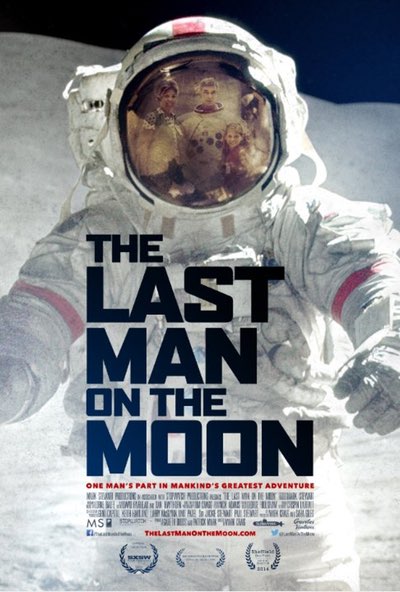Review: The Last Man on the Moonby Jeff Foust
|
| “I’m realizing that, like when we were in the space program going full bore, eight days a week, I ignored my family. We all did,” Cernan said. |
However, that disappointment is not the primary focus of The Last Man on the Moon, a documentary about Cernan’s life (it’s also the title of a 1999 memoir by Cernan.) The film had its world premiere in the UK in 2014, but is just now in limited theatrical release in the US, along with being available through on-demand services like Amazon Video and iTunes. The movie, made with Cernan’s cooperation, is far more about a reflection of his life an achievements than any disappointment about what he, or the nation, has not done.
The documentary follows a fairly conventional approach to tracing Cernan’s life, starting with growing up in the Midwest and becoming a pilot in the Navy before being selected as an astronaut. He flew on Gemini 9, struggling with a spacewalk that had less to do with any failings on his part than the lack of knowledge NASA had at the time on how to perform one. He flew to the Moon on Apollo 10, the dress rehearsal for the lunar landing achieved by Apollo 11, then landed there himself on Apollo 17.
There are Cernan’s own comments about those missions, and life as an astronaut, interleaved with those from others involved, including his wife at the time, fellow astronauts like Tom Stafford and Dick Gordon, and Chris Kraft and Gene Kranz in mission control. The filmmakers do find some novel approaches to telling aspects of his life story. The astronaut selection process—including the classic aspects of checking into Houston’s Rice Hotel under an assumed name and undergoing a thorough physical examination—is told through an animation that looks like it came from the 1960s. A more modern computer animation is used to help visualize Cernan’s challenging Gemini spacewalk.
The film doesn’t dwell much on his post-Apollo life, other than to discuss how he and his first wife drifted apart and eventually divorced, and his later remarriage. The film notes he remains very active to this day, traveling and speaking, to the point where, he says, friends and family have urged him to slow down. “I’m realizing that, like when we were in the space program going full bore, eight days a week, I ignored my family. We all did,” he says late in the movie, getting dressed in a hotel room before another event. “But I’m finding that I’m getting innuendoes from my family, from my grandkids, from my wife, that I’m doing the same thing now.”
That lack of time for him family, now and as an active astronaut, is one of the few regrets he expresses in the movie. “It was a very selfish life on my part, and on the part of all the guys,” he recalls in a conversation with his daughter about the lack of time they had to go camping while she was growing up and he was an active astronaut. But, as another astronaut interviews in the film, Alan Bean, pointed out, there was no such thing as work-life balance for astronauts of that era.
| “I’m the luckiest human being in the world,” he says. “I don’t going around living in the past, for the most part.” |
There’s little discussion in the book about a more professional disappointment by Cernan: the failure of the nation to return humans to the Moon. In the movie, he visits the Kennedy Space Center shortly after the end of the shuttle program, the launch pads now sitting empty (but, apparently, before work started to convert one into a pad for use by NASA’s Space Launch System and the other for use by SpaceX’s Falcon launch vehicles.) “I don’t want to remember it this way,” he says at one of the pads. “It’s just disappointing. I almost wish I didn’t come here today.” There’s no discussion of the public criticism that Cernan and other Apollo-era astronauts, including Jim Lovell and the late Neil Armstrong, leveled at the Obama Administration in 2010 when it cancelled the Constellation program and ended efforts to return humans to the Moon.
Cernan, though, doesn’t dwell on those disappointments in the film, or presumably in his life. “I’m the luckiest human being in the world,” he says. “I don’t going around living in the past, for the most part.” The Last Man on the Moon is an exception to that, of course, as Cernan and the filmmakers take us on a journey though his remarkable career. And one day, perhaps, someone else will hold the title of the “last” (or, perhaps, most recent?) person on the Moon.
